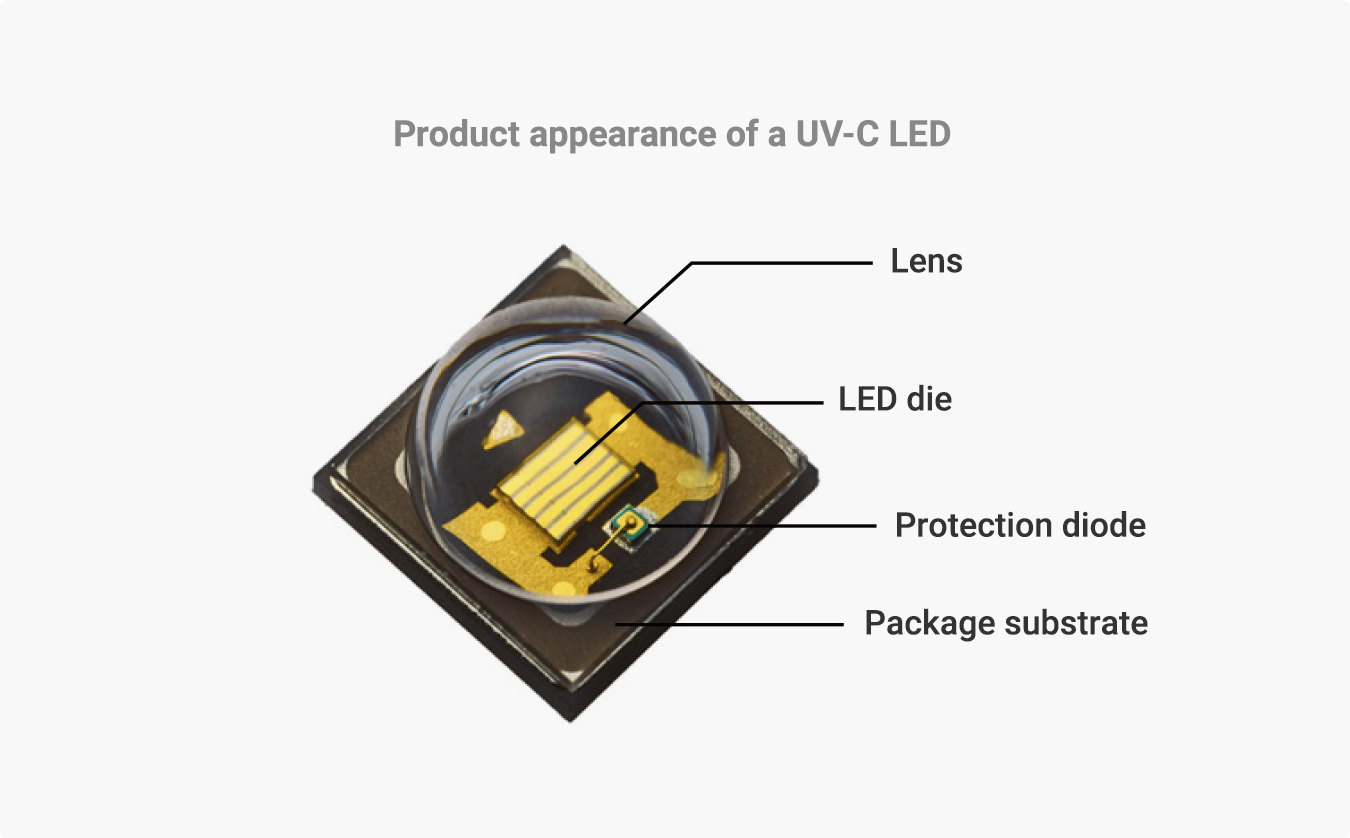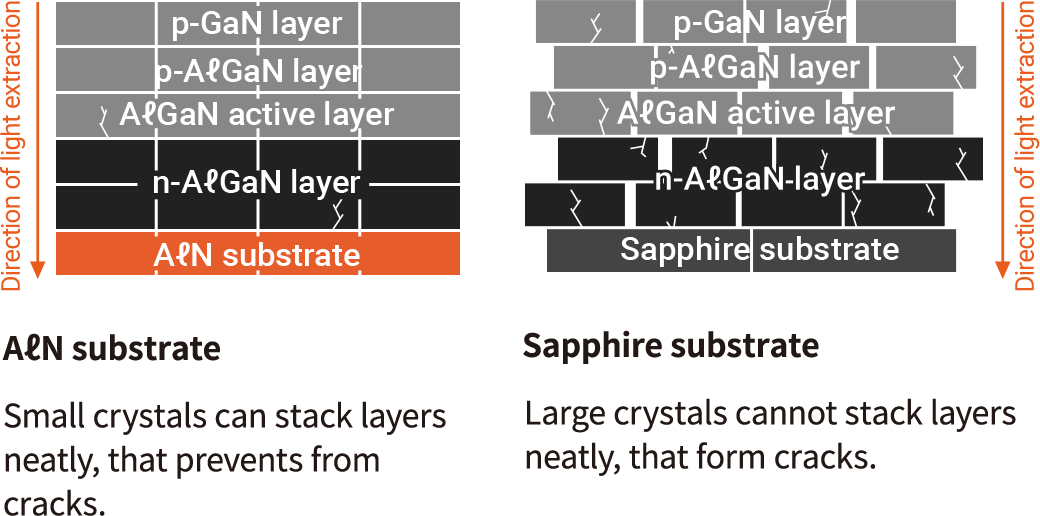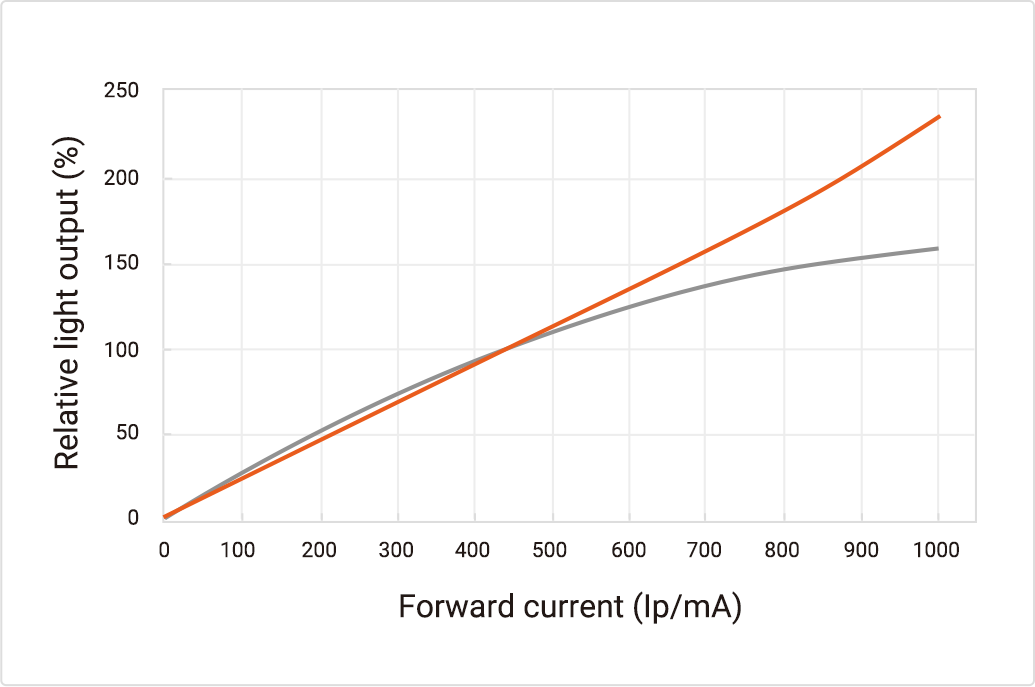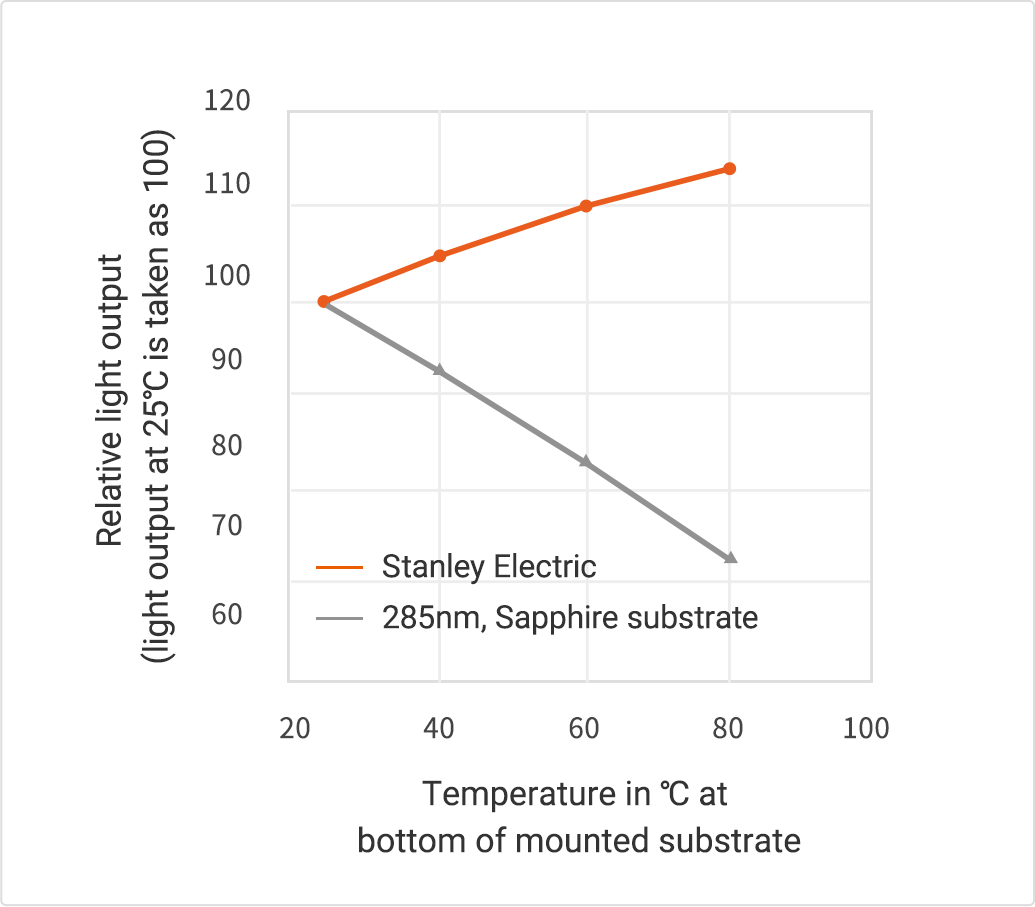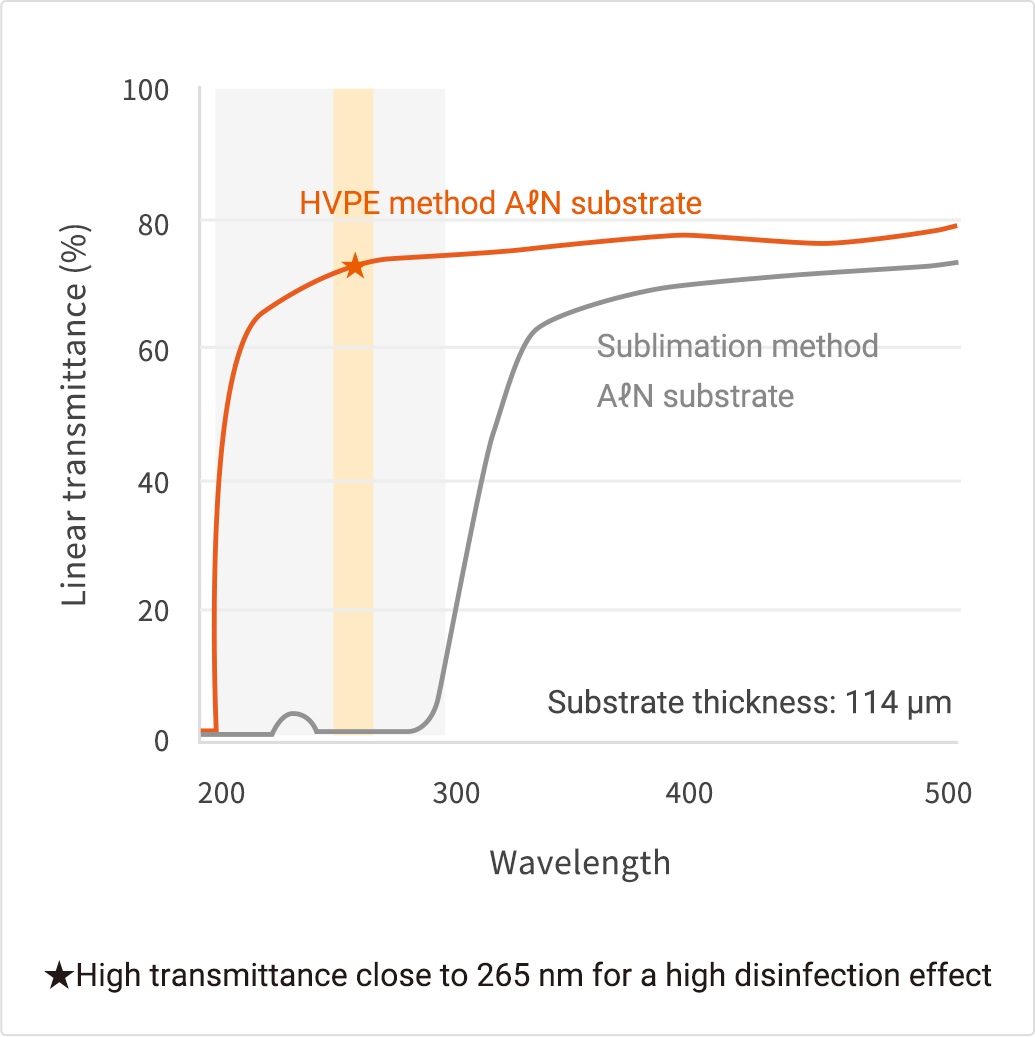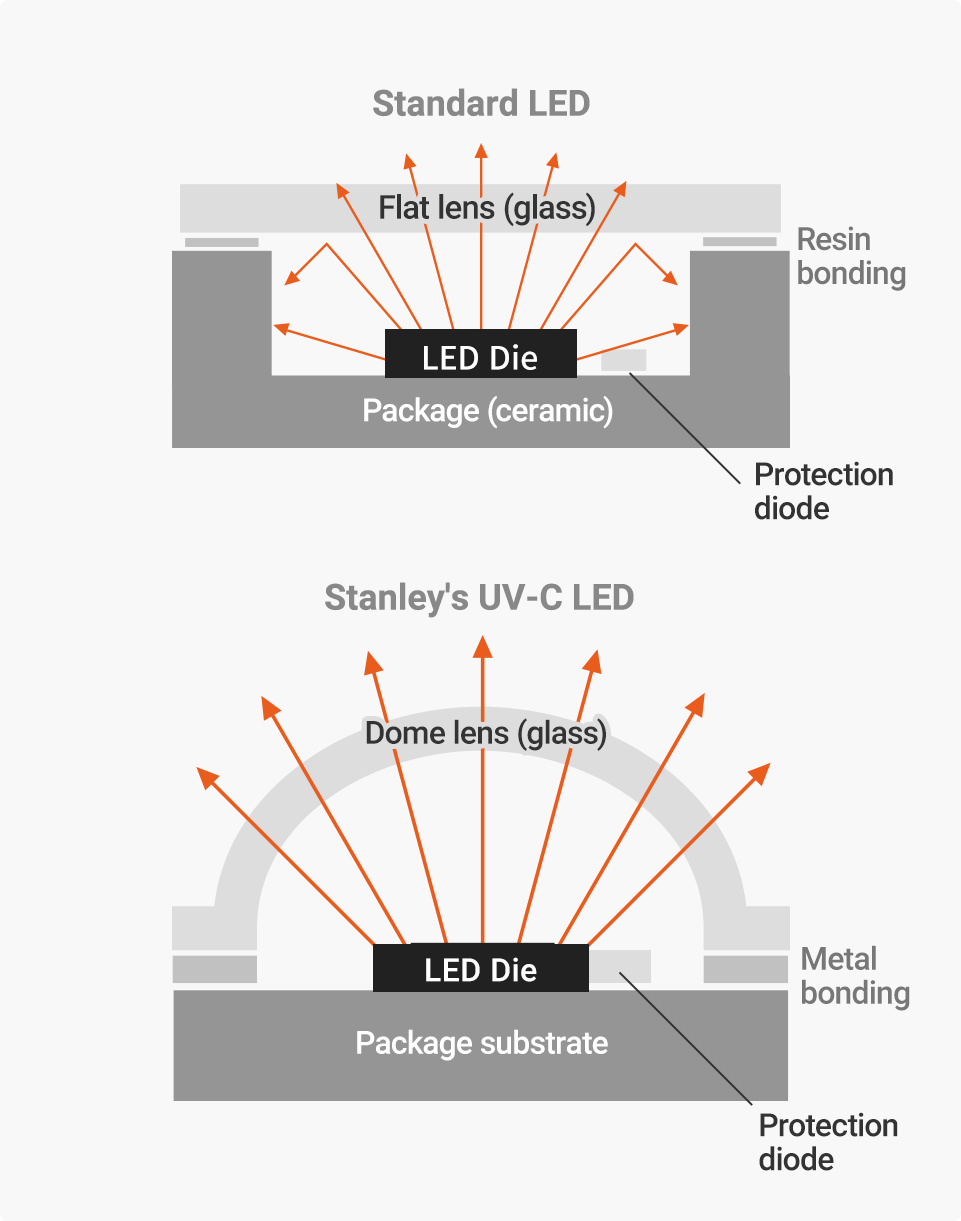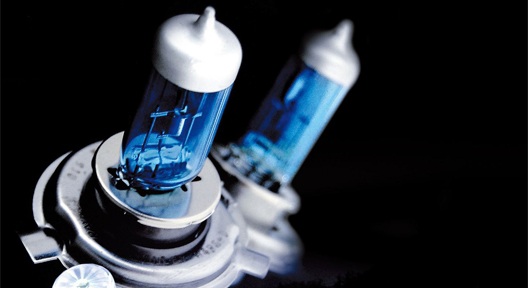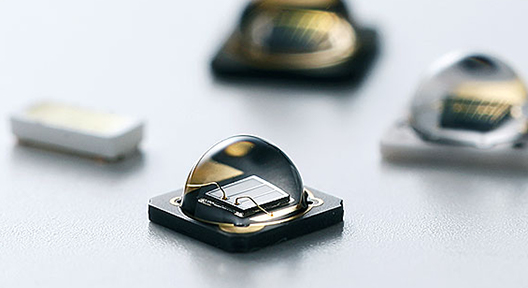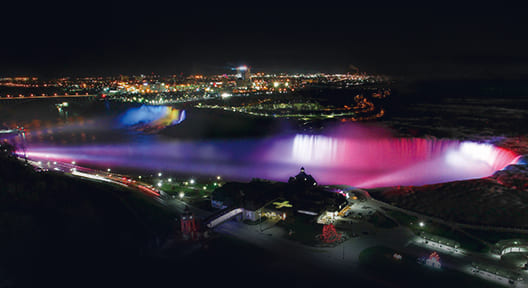- HOME /
- Product information /
- UV-C products /
- Advantages of Stanley's UV-C LED
Advantages of Stanley's UV-C LED
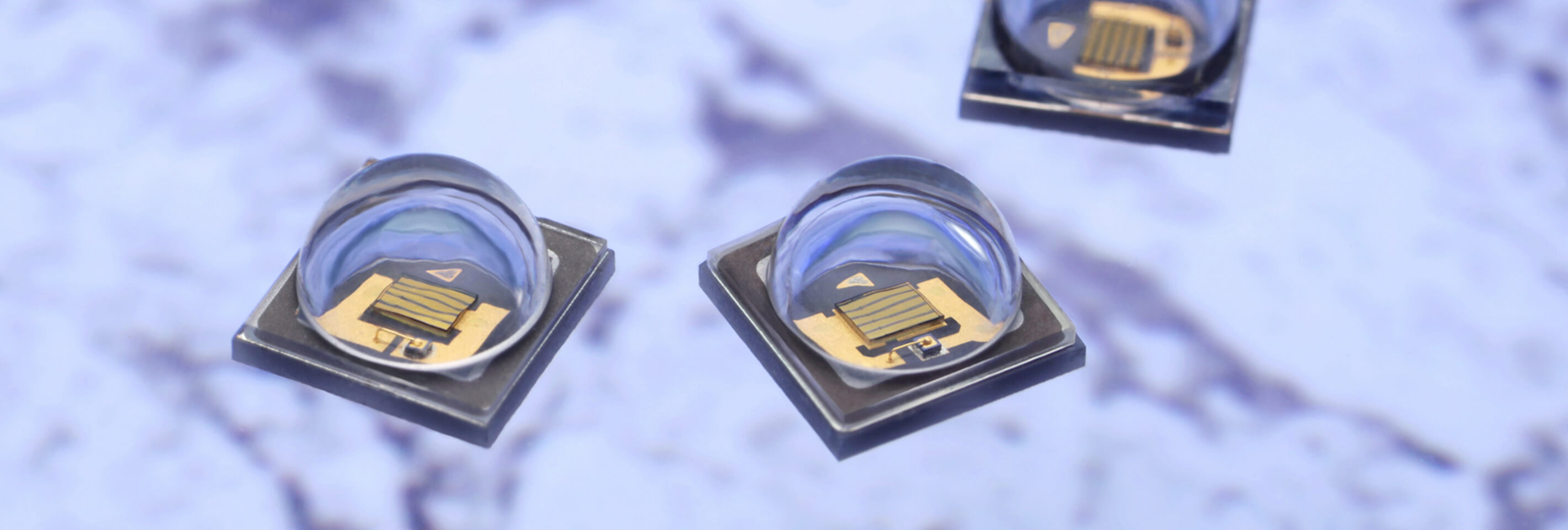
UV-C LED is attracting
public interest as a way of
solving social issues
UV-C, which has a significant disinfection effect on bacteria and viruses, is a technology that is attracting a great deal of attention worldwide for its use against the spreading infection of the new coronavirus. The need and awareness for disinfection has increased that it is essential to sanitize surfaces of common items and spaces in offices, public facilities, classrooms, and medical treatment facilities where many people gather.
Stanley Electric has accelerated its development of UV-C LEDs with wavelength of 265 nm and products that apply this technology, to offer a solution to these social issues. We have achieved a UV-C LED that combines high quality, high output and high efficiency by making full use of our knowledge of the technology and material involved in LED device development and the manufacturing process cultivated over years. This section introduces the three underlying technologies that are the foundation to achieve this.
UV-C LED structure
A UV-C LED consists of the LED die, protection diode, package substrate, and a lens.
The three technologies that
achieve high quality,
high output and high efficiency
Stanley Electric developed a proprietary UV-C LED not achievable by other companies by seeking ways to improve the LED die and package structure.
LED die
As shown in [Fig.2], the LED die is made by stacking each layer on the AℓN substrate at the very top. Stanley Electric uses two distinctive techniques for the AℓN substrate, which is the foundation of these stacked layers.
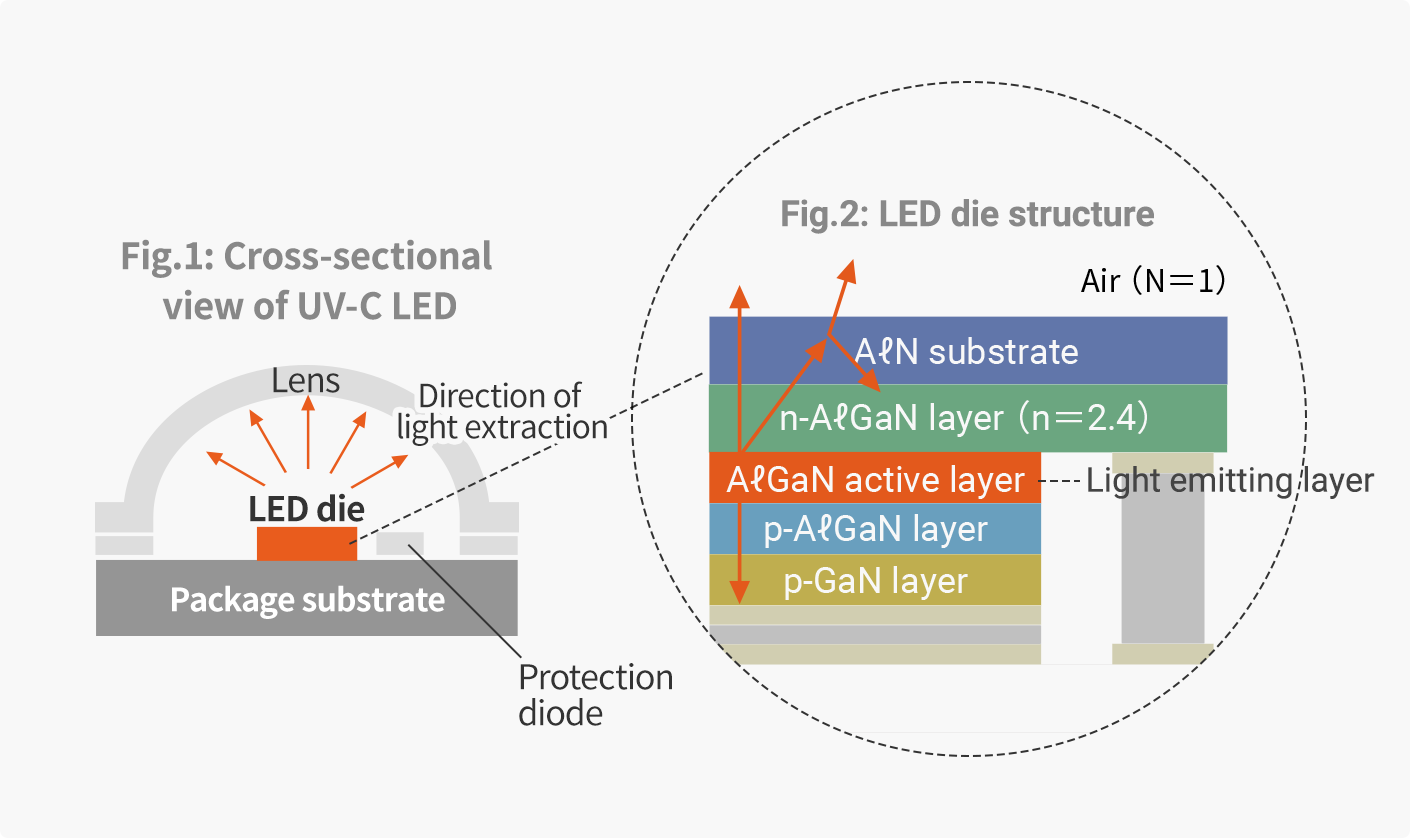

[Fig.2] LED die structure: ●AℓN substrate, ●n-AℓGaN (aluminum gallium nitride) layer, ●AℓGaN active layer, and the ●p-AℓGaN layer, from the side where light is extracted.
And, the n-AℓGaN layer has an n-type electrode and the p-AℓGaN layer has a P-type electrode via p-GaN (gallium nitride) referred to as the contact layer.
Click for the image.
Technology (1)
Using substrate material with few crystal defects
The substrate, which forms the groundwork for the LED die structure, is the part that acts as the foundation to stack the layers. If the lattice constant (spacing between crystal grains) difference of the substrate and n-AℓGaN (aluminum gallium nitride) layer is large, crystal defects will increase. Therefore, using a substrate with material that is similar to the n-AℓGaN layer improves the crystal quality.
Sapphire material used for blue LEDs is used in many UV-C LED substrates. However, since the crystal grain spacing (lattice constant) is large, cracks easily form in the substrate stacked layer and stacking layers for short wavelengths such as 265 nm is especially difficult. When cracks form, it is not possible to emit light efficiently even when using a large current. Furthermore, the substrate temperature will rise when just using a small current resulting in a drop in efficiency.
Stanley Electric has acquired HexaTech, Inc., which owns AIN substrates consisting of aluminum(Aℓ) and nitrogen(N), to possess AℓN substrate manufacturing that requires advanced technical capabilities in order to achieve the 265 nm wavelength with high sterilization efficiency. Since we were able to create a well-formed stacked layer structure with a small crystal grain spacing [See Fig.3] this resulted in making it difficult to form cracks (few crystal defects).
This enables light to be generated at a low current and with high output. Stanley's LEDs with the AℓN substrate can maintain a high output even when using a large current while no increase in light output occurs from around 400 mA for sapphire substrates. [See Fig.4].
Furthermore, the use of AℓN substrates with few crystal defects achieves high output even in high temperature environments. The efficiency of competitor LEDs drops significantly when the temperature rises but Stanley Electric's LED can maintain high efficiency and has superior temperature characteristics [See Fig.5].
Technology (2)
Creation method to achieve a stacked layer substrate
with high transmittance regardless of the width
The 2nd featured technology is to extract light emitted from the die (light extraction efficiency). AℓN substrates is a kind of window for the LED die and the greater the transparency, the more bright light can be extracted. Also, using thicker substrates leads to a decrease in the difficulty of handling them during the manufacturing process. Meaning that high transparency and thickness are both important factors for the substrate. However, with the standard sublimation method, impurities enter the crystal causing reduced transparency and when attempting to make the substrate thicker, it will unfortunately reduce the transparency.
This is why Stanley Electric adopted a technology referred to as the HVPE (Hydride Vapor Phase Epitaxy) method to create a highly transparent substrate that still retains its thickness. In comparison to AℓN substrates based on the conventional sublimation method, transmittance is remarkably higher for wavelengths of 300 nm or less (close to 265 nm for a high disinfection effect) and this enables light to be efficiently extracted [See Fig.6].
This achieves high efficiency by extracting light strongly emitted from the device with greater efficiency.
Package structure
The 3rd technology to achieve high quality, high output and high efficiency is used in the package structure.
Technology (3)
Hermetically sealed package
that is highly reliable and
uses a dome shape
The LED package must allow light emitted from the die to be sent outside without as much loss as possible. Typically, LEDs use a method of bonding the substrate onto a flat-shaped glass lens. However, this causes significant loss of light and the package itself causes light from the die to be attenuated. Then Stanley's 265 nm UV-C LED uses dome-shaped glass. We can see that there is less light loss compared to flat glass. And UV-C LEDs are easily affected by the external environment and especially when moisture enters the package, there is a risk the LED will not turn on. Stanley's UV-C LEDs are not of the standard resin-bonded type. Instead the lens and package are joined and sealed with metal to block the inside and outside of the package and prevent moisture penetration [See Fig.7]. We also guarantee moisture-resistant operation for our products.
Summary
As explained above, Stanley Electric has achieved a UV-C LED that provides high quality, high output and high efficiency at the highest level in the industry by combining three technologies. UV-C LEDs are expected to replace mercury lamps, which were the standard in use until today, but issues still remain concerning their ability for higher output. From now on, we will work on the challenge of further increasing the output making use of the wealth of experience and technology we have developed so far, while contributing towards improving the flexibility in design and in size of customers' applications with the goal of widespread use.
Stanley Electric's UV-C technology
-
 How UV-C disinfect?
How UV-C disinfect? -
 Applications with UV-C disinfection
Applications with UV-C disinfection -
 Product lineup
Product lineup
